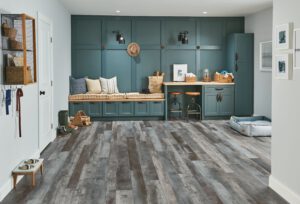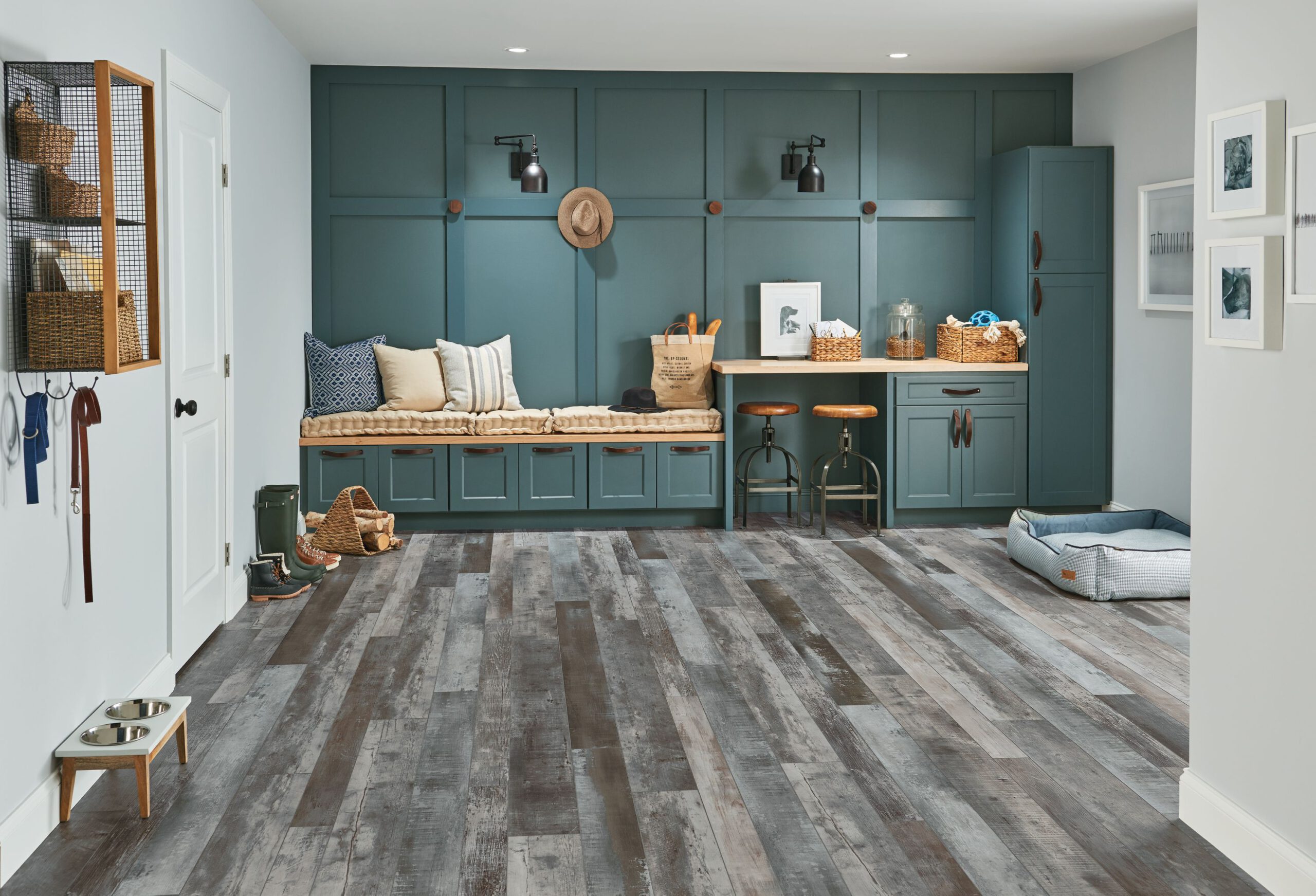Flooring Fairfield NJ is one of the biggest investments homeowners make. It’s also a critical design element that can impact the entire look of a room.
Hardwood floors add value to your home and are great for high-traffic areas. They’re also easy to clean and resistant to stains and scratches.
Hardwood floors have been a popular choice for centuries, offering timeless beauty that never goes out of style. The natural material has a warm, welcoming feel that instantly makes a space more inviting. It also increases your home’s value and is durable enough to last decades with proper maintenance.
Hardwood can be purchased in solid or engineered construction and in a wide range of grain patterns. The species of wood you choose will have a significant impact on the look and durability of your floor. You can even opt for reclaimed wood, which is often less expensive than new hardwood and can add a sense of history to your room.
When choosing a wood species, consider its Janka hardness rating and how durable you need your floors to be. Softer woods, like pine, can be scuffed or scratched more easily than hardwoods, such as oak. Oak is the most popular hardwood flooring choice because it’s a durable species that’s easy to work with and can be stained nearly any color you’d like.
Once you’ve chosen the type of wood and the color, decide whether you prefer a matte, satin, or semi-gloss finish. Matte and satin provide the least amount of sheen, making it harder to see scratches and scuffs. Semi-gloss offers some sheen but is not as reflective as gloss and may show marks more easily.
Before installation, your wood will need to acclimate to your climate, which can take two weeks. Existing flooring will need to be removed and furniture moved. The planks are then cut to size and sanded, which can create enormous amounts of dust that can be harmful to your health.
You can also choose to have your wood prefinished or stained onsite. If you opt to have your floors stained onsite, you can select a stain that complements your room’s décor and is suited to your lifestyle. You can also ask your installer to keep a sample of the stain in case you need to touch up scratches or dents.
Tile
Tile is a hard-wearing, long-lasting flooring material that looks beautiful in almost any room. It’s especially popular in kitchens and bathrooms, as well as in dining rooms and living areas. But before you start thinking about using tile for the floor of your home, it’s important to understand what differentiates flooring tile from wall tiles and how to choose a style that will complement your overall interior design.
Generally speaking, “tile” refers to thin flat coverings made from natural or manmade materials such as stone, metal, ceramic, and baked clay. They are used to form walls and floors in buildings, often over a concrete or gypsum base. Tiles can vary in thickness and size, with thicker tiles better suited for the floor because they add durability and can stand up to impact. They are usually fixed in place using a mortar base, can be designed to form intricate or simple patterns, and come in a huge range of colors, sizes, and finishes.
The most common type of tile for flooring is porcelain. It is dense, hardwearing, and impervious to water damage and can be produced in a wide array of textures and surface effects, such as wood, encaustic patterns, and natural stones.
Other types of tile for floors include ceramic, terra cotta, granite, and slate. These are usually harder and more durable than other types of tile, but they are also prone to cracking and discoloration if not sealed properly. They are best suited to rooms with low levels of foot traffic or can be covered by thick rugs to reduce the impact of footsteps.
Because of their hardness, most tile floors are cold underfoot and can feel stark in contrast to plush carpeting. They are also not very good at muffling sound, so they can echo in a room. Some people like to use the installation of radiant heating to help mitigate this issue, but it’s not a problem that everyone is going to want to address in their own homes. Despite these downsides, a beautiful tile floor can really elevate the look and feel of a home and add real value.
Concrete
Concrete flooring isn’t for everyone, but it can offer a stylish and unique design element in homes with the right decor. It’s also incredibly durable and hard-working, which is why it’s so popular for industrial and commercial floors. Concrete is a composite material that consists of Portland cement, water, and aggregate (gravel, sand, or rock).
Once poured and set, concrete floors can be finished in a variety of ways. They can be polished, waxed, etched, stained, or stamped to create a specific aesthetic.
Staining is the most common finishing technique for concrete floors, but it isn’t the only way to color them. You can also use concrete paint, acrylic staining, and spray overlay techniques to customize your floor’s look. The color of your concrete can help determine the overall style of your room; dark colors tend to make rooms appear larger, while lighter shades are more open and airy.
Texturizing is another popular finishing method for concrete floors. It involves dragging a brush or trowel over the surface of the drying concrete to leave different types of ridges. This can give the concrete a rough, gritty texture that increases traction and decreases slippage. It’s also used to make a more modern-looking surface by creating a speckled effect.
A more creative way to add color to your concrete floors is through acid etching or staining. These methods penetrate the surface of the concrete to tint it in a wide range of hues. You can also add flecks of colored glass or crushed marble to the concrete mix for added interest.
Concrete floors are extremely durable and hard-working, but they still require some care. They must be sealed or waxed regularly to protect the surface and prevent it from cracking, staining, or fading. You should also mop them frequently with a neutral cleaning agent to remove dirt and debris. The surface can be damaged by dropped objects, so be careful about where you place your furniture. Concrete is hard to dent, and it resists most chemical damage, but it can chip or scratch if you aren’t careful with your shoes or appliances.
Carpet
Carpet has long been the flooring of choice for many homeowners and commercial spaces. It is soft and warm underfoot, hides dirt and dust mites, and absorbs sound well. It also offers some of the best acoustic qualities of all floor types, making it an excellent choice for offices, schools, and call centers.
When comparing carpets, the most important factors to consider are fiber, face weight (or pile weight), twist, and pile density. The higher the face weight and denser the pile, the better the quality of the carpet. A quality carpet should have a minimum of 34–40 ounces of fiber and five twists.
The best-performing carpet fibers are nylon and polyester. Nylon is stain-resistant and doesn’t fade or mat down as easily as wool or other natural fibers. It is mold- and mildew-resistant, dries quickly, and doesn’t cause static. However, it is more expensive than other fibers.
Polyester is similar to nylon, but it is a bit cheaper. It is not as stain-resistant or durable, but it looks good and is moisture-resistant. It’s a great choice for high-traffic areas, and it is available in a wide range of colors.
If you’re looking for a carpet that feels luxurious and is soft, choose a premium cut-pile textured style. The twisted fibers create height and texture variations, which disguise dirt and make it easier to vacuum. This carpet type also shows footprints and furniture indentations less prominently than other types.
Loop-pile styles, such as Berber and sisal, have longer, twisted fibers that add a fuller body to the carpet and increase durability. They are suitable for heavy-traffic areas and are easy to clean.
There are also tufted carpets, which are made on massive looms that weave together bobbins of yarn. These are available in a wide variety of patterns and colors and can be very upscale and luxurious. Tufted carpets can be cut-pile or loop-pile.
Some of the most popular carpets these days are low-VOC, which means they don’t emit harmful VOCs into the air. This is an especially important consideration for homes, where we spend most of our time. Look for carpets that have a FloorScore or GreenGuard certification for the most eco-friendly options.
